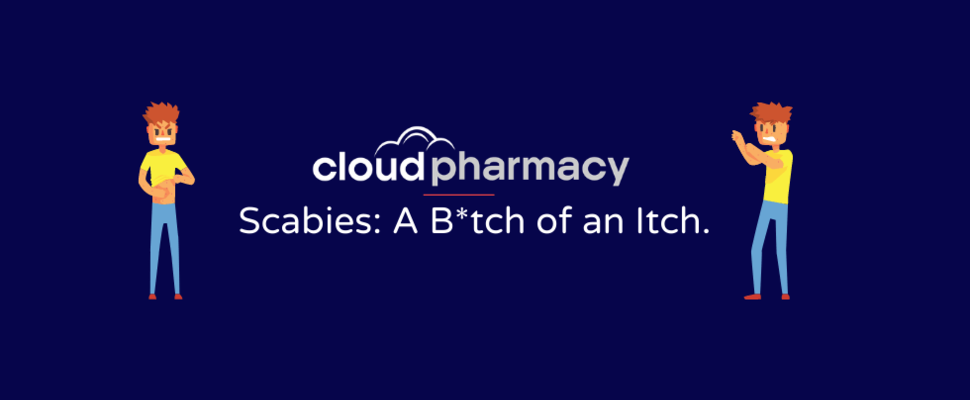Everything You Need To Know About Scabies
This week we take a look at scabies. We try to debug all the myths around the stigma of it, how to treat it, and how we can try to prevent it from happening.
This week we take a look at scabies, we try to debug all the myths around the stigma of it, how to treat it, and how we can try to prevent it from happening . I will repeat this several times in the article but scabies is not directly linked to how hygienic a person is; it can happen to anyone. So, before you get on your high-horse thinking it is only for people that don't take care of themselves, there's every chance you will be seeing me next week to get some shampoo for your buggy barnet
What Are Scabies?
Scabies is the result of an infestation of the sarcoptes scabiei mite. The mites burrow into the skin and deposit eggs, (disgusting, I know). As the eggs are laid, the body triggers an allergic response, this results in an angry pimple like rash and an incredibly intense itch. The symptoms will normally appear between two and six weeks after initial infection and can appear anywhere on the body, but more notably between the fingers, along the waistline, or on the wrists. It is not a serious condition but it is very easily transmissible.
How Do I Know if I Have Scabies?
When a person is infested with scabies, the most common symptoms are:
- Intense itching, especially at night.
- A pimple-like rash.
- Scales or blisters.
- Sores caused by scratching.
During its initial stages, scabies may be mistaken for other skin conditions because the rash looks similar - what sets scabies apart is the relentless itch, notably most severe in children and the elderly. The rash can spread to anywhere on the body but not the head. Another tell-tale sign of scabies is its appearance of track-like burrows in the skin. These raised lines are usually grayish-white or skin-colored. They are created when female mites tunnel just under the surface of the skin. After creating a burrow, each female lays 10 to 25 eggs inside.
Scabies is contagious and can be contracted through prolonged physical contact with an infested person. This includes sexual intercourse, although a majority of cases are acquired through other forms of skin-to-skin contact. Less commonly, scabies infestation can happen through the sharing of clothes, towels, and bedding, but this is not a major mode of transmission - It is not likely to spread through a quick handshake or hug. The scabies mite can’t jump or fly, and it crawls very slowly! People who live or work closely together in nurseries, university halls of residence or nursing homes are more at risk. So just remember ,when you move back up to university, anyone can get scabies and has nothing to do with personal hygiene - there's worse infections to worry about at university than scabies!
As harmless as scabies is, there is a strain of scabies known as crusted scabies (Norwegian scabies) which involves tens of thousands of mites on your body - it causes the skin to develop thick crusts full of mites and eggs. Crusted scabies is most common in people with weakened immune systems, the elderly, and people who are disabled. This type of scabies is highly contagious and requires swift treatment to prevent outbreaks.
How Do I Treat Scabies?
Your local pharmacist will recommend creams and lotions as a suitable treatment. Permethrin is the most used in the treatment against scabies, It is applied all over the body before sleep, and left on overnight, then washed off in the morning. Everyone in the household should be treated with the cream even if they do not present symptoms and then repeat the treatment 7 days later to ensure all the eggs have been killed. If the scabies is more severe, then sometimes an oral tablet called ivermectin can also be used. While prescription medicines can kill scabies mites and their eggs, they don't provide any immediate itch relief. To control itching, especially at night, antihistamines such as chlorphenamine can help. Hydrocortisone cream may also help, but it can change the appearance of the scabies rash, making the condition harder to diagnose so it is advised to use this cream only after a medical professional has confirmed the diagnosis.
How Can I Stop Scabies From Spreading?
Scabies mites can live up to two to three days on the surface of clothes, bedding, or towels. To make sure these mites are killed, wash any sheets and clothing used by the affected person within the past three days. Wash the items in hot water and dry them in a hot dryer (above 50 degrees). Items that can't be washed should be placed in a sealed plastic bag for seven days. To stop children from sucking on the cream once applied, it is also advised to put a glove or mitten over the hands to stop this. Similarly, you should avoid physical contact or sex whilst undergoing scabies treatment, and do not share household items such as towels, bedding, or clothing with someone that has scabies. It is also fine to return back to work or school 24 hours after the first dose of treatment.















